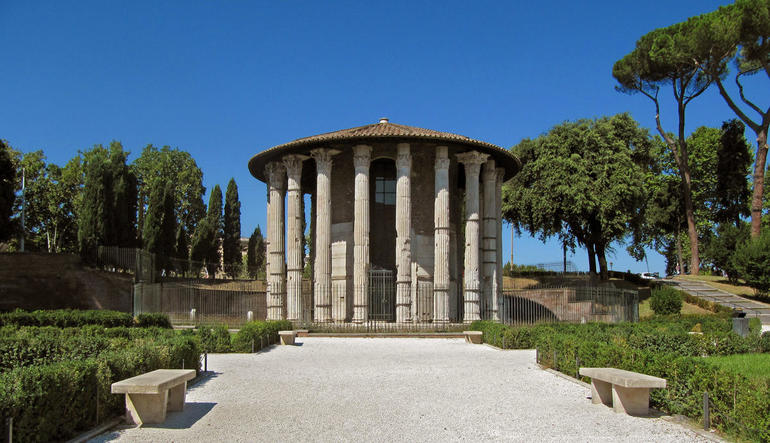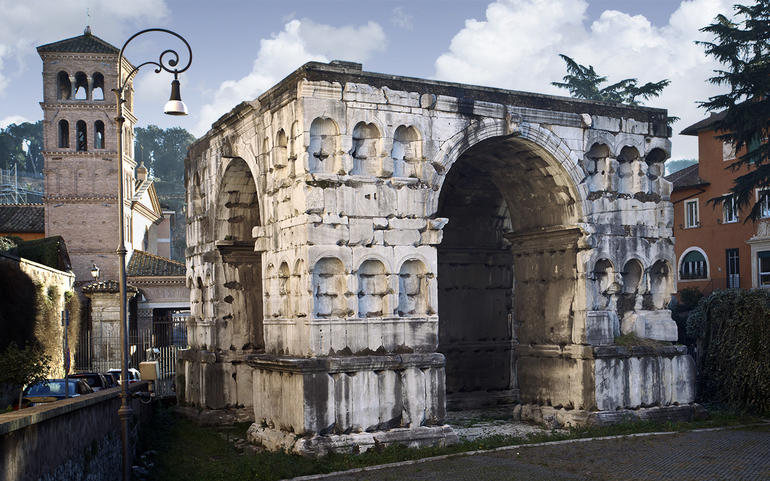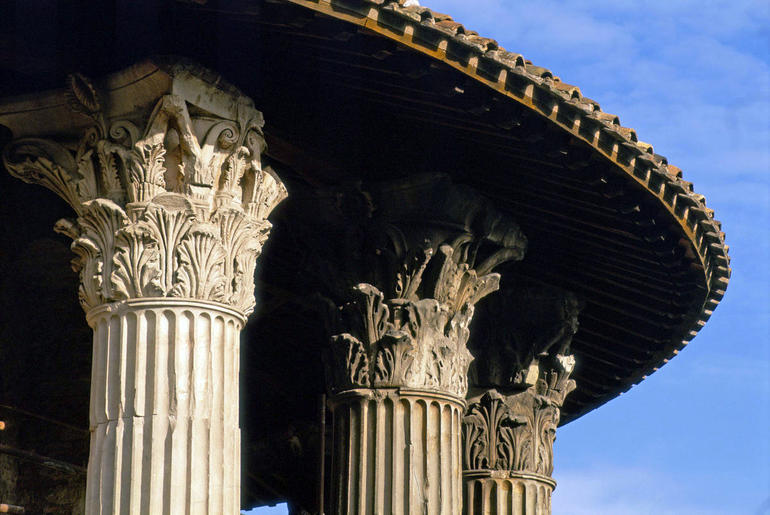
The Temple of Hercules
The oldest surviving marble building in Rome, the Temple of Hercules (and its neighbor, the Temple of Portunus) helps fuel visitors’ imagination of ancient Rome. The circular standing structure, with 20 elegant Corinthian columns circling its periphery, owes its preservation to its 12th-century conversion to a Catholic church (thus making it off-limits to marble thieves). Today the walls are covered with colorful medieval frescoes. Both the Temple of Hercules and the Temple of Portunus sit in the area known as the Forum Boarium, a Republican-era space that once served as a major commercial area. Both sites were listed on the Watch and have subsequently been conserved by WMF and its local partners.
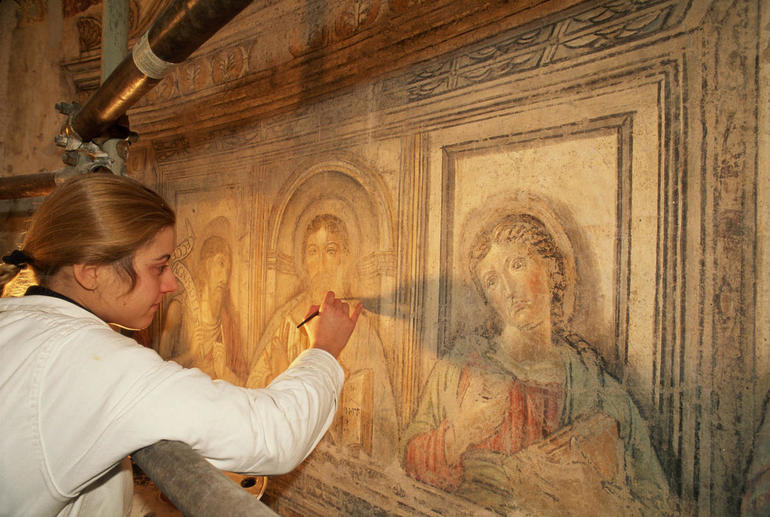
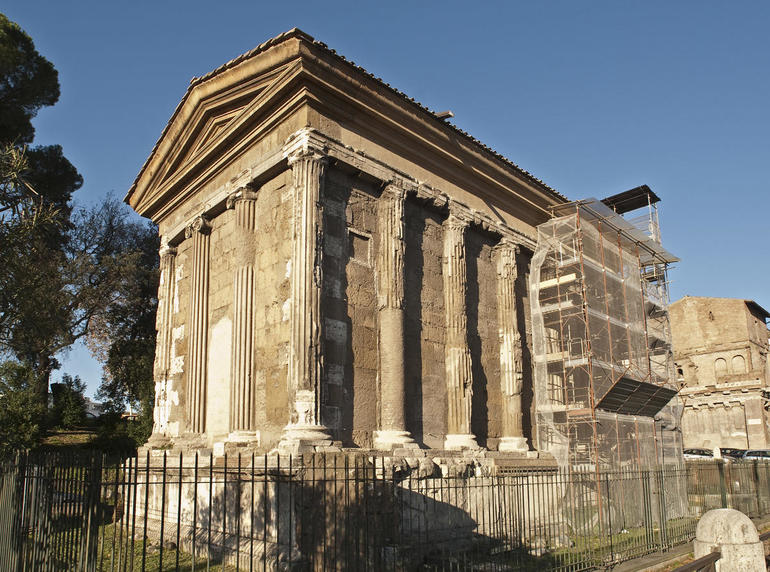
Temple of Portunus
The Temple of Portunus, dating to the first century B.C., is a rare survivor of Roman Republican architecture and a reminder of the former magnificence of the Forum Boarium, a major commercial area along the banks of the Tiber in antiquity. The temple was dedicated to Portunus, a youthful god associated with water crossings and seaports. The rectangular building rests on a high podium with a single flight of steps leading to a pronaos, or portico, and a single cella. The combination of this typical Etruscan ground plan and the temple’s Greek Ionic columns is characteristic of Roman Republican period architecture.

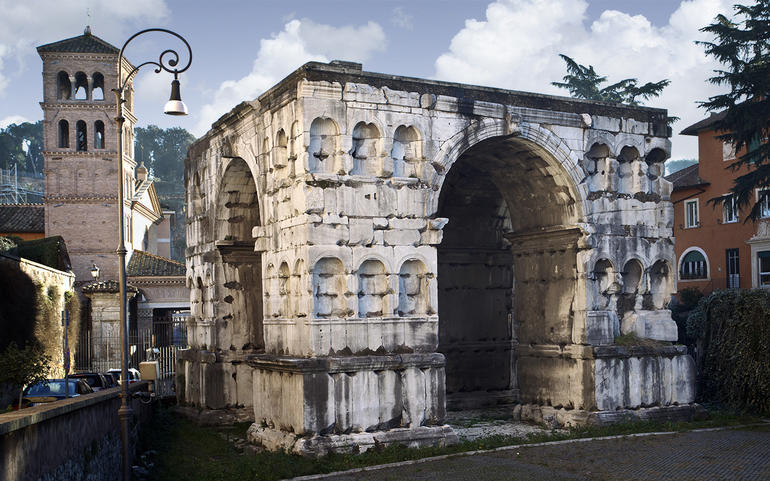
Arch of Janus
The Arch of Janus in the Forum Boarium is the only surviving quadrifrons arch in Rome. This arch with four facades marked an important meeting place and crossroads in antiquity, where a busy port on the Tiber River met the slope of the Palatine Hill and led into the heart of the ancient city. The arch rests firmly on four broad pillars that support a cross vault. The structure is covered with marble slabs taken from the ruins of earlier buildings, and this construction technique has helped archaeologists date the structure to the second half of the fourth century.

A Long-Awaited Reopening
Today the arch is surrounded by a fence and it is not accessible to the public, after the explosion of a car bomb in front of the nearby church of San Giorgio in Velabro, which took place on the night of July 27, 1993. Black crusts and stains disfigure the appearance of the ancient arch, the last monument of the Forum Boarium that remains unrestored. The Arch of Janus was included on the 2016 World Monuments Watch to highlight the opportunity to further elevate the visibility of the Forum Boarium through its restoration. Thanks to support from American Express, WMF will now collaborate with the Superintendency for the Coliseum and the Central Archaeological Area to complete a study and carry out the complete restoration of the arch.
Contrary to popular belief, the arch was not dedicated to the Roman god Janus, but it was named after the Latin word ianua, or door, which was itself derived from the name of the double-headed god of beginnings and transitions.
The Arch of Janus will then join the nearby temples of Hercules and Portunus, which were included on the World Monuments Watch in 1996 and 2006, respectively, and have since been restored thanks to significant support from American Express, the Robert W. Wilson Challenge to Conserve our Heritage, and the Selz Foundation. WMF’s long-standing partnership with the Italian Ministry of Culture has brought back to public attention an important chapter in the life of ancient Rome.
WMF’s long history of conservation projects in Italy has been possible thanks to our local partners and generous donors such as American Express. Through our activities at these heritage sites, our hope is that at the conclusion of each project, the public has the opportunity to better understand how a historic site enriches the lives of the local communities and visitors.


